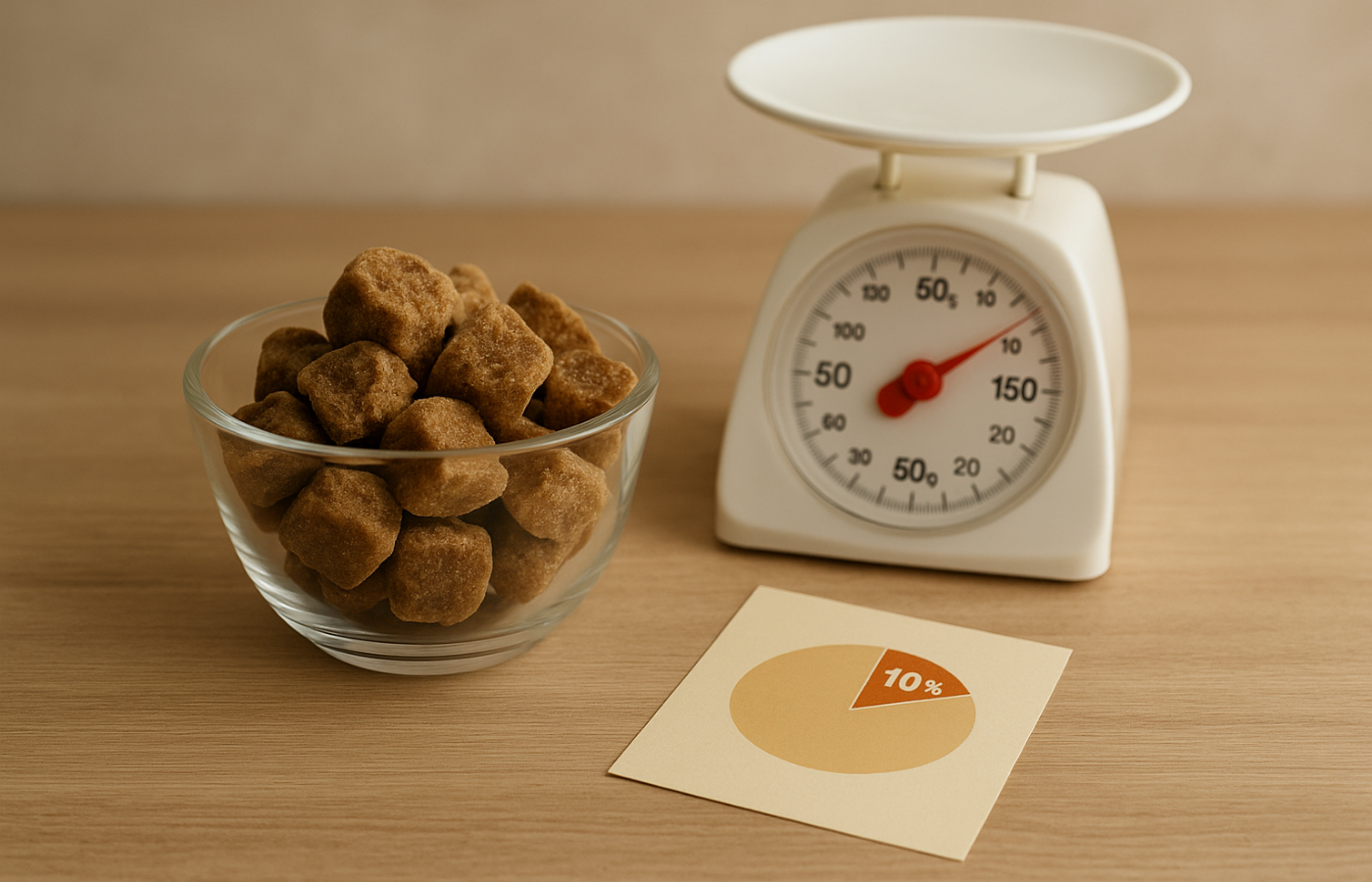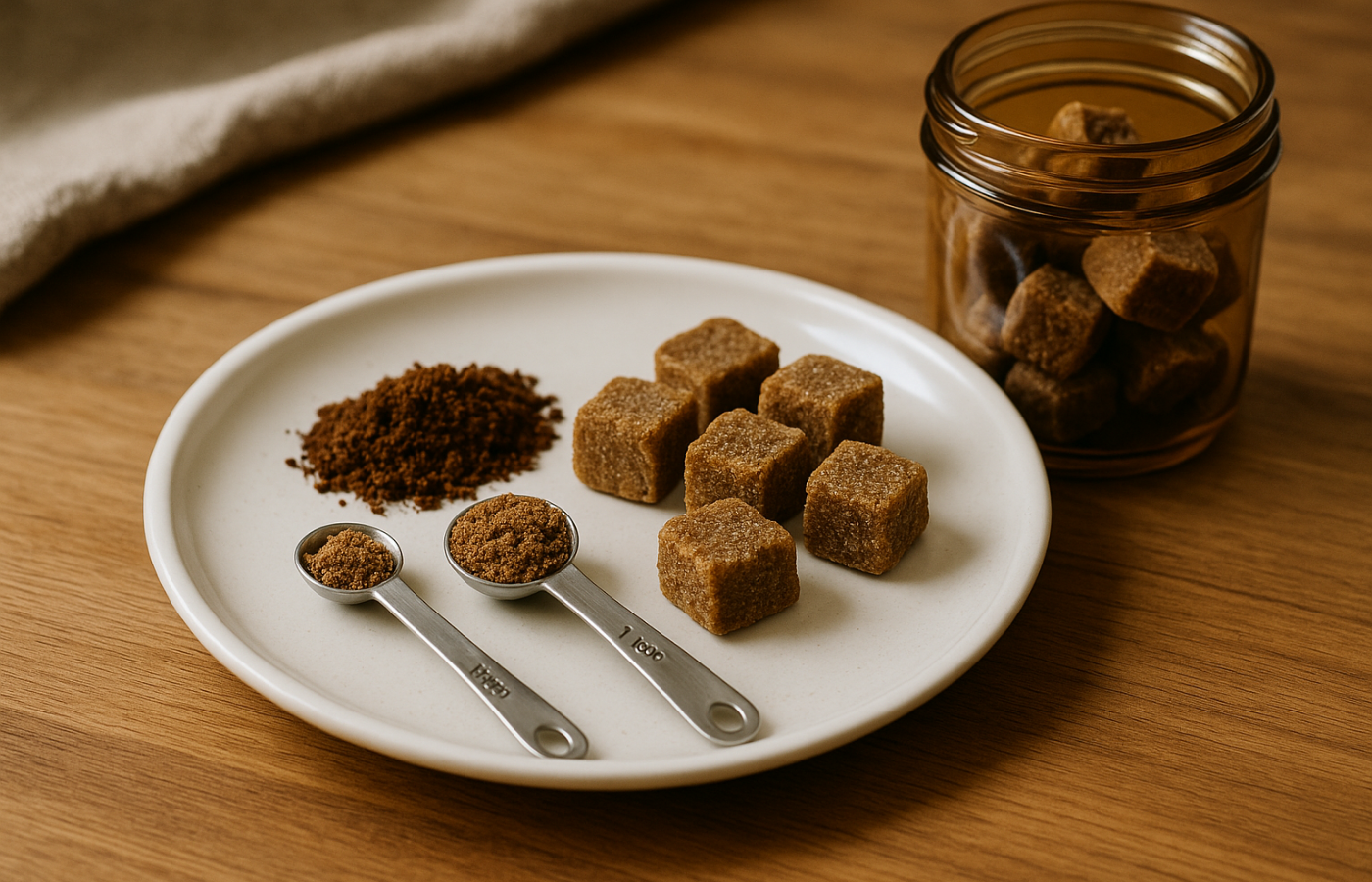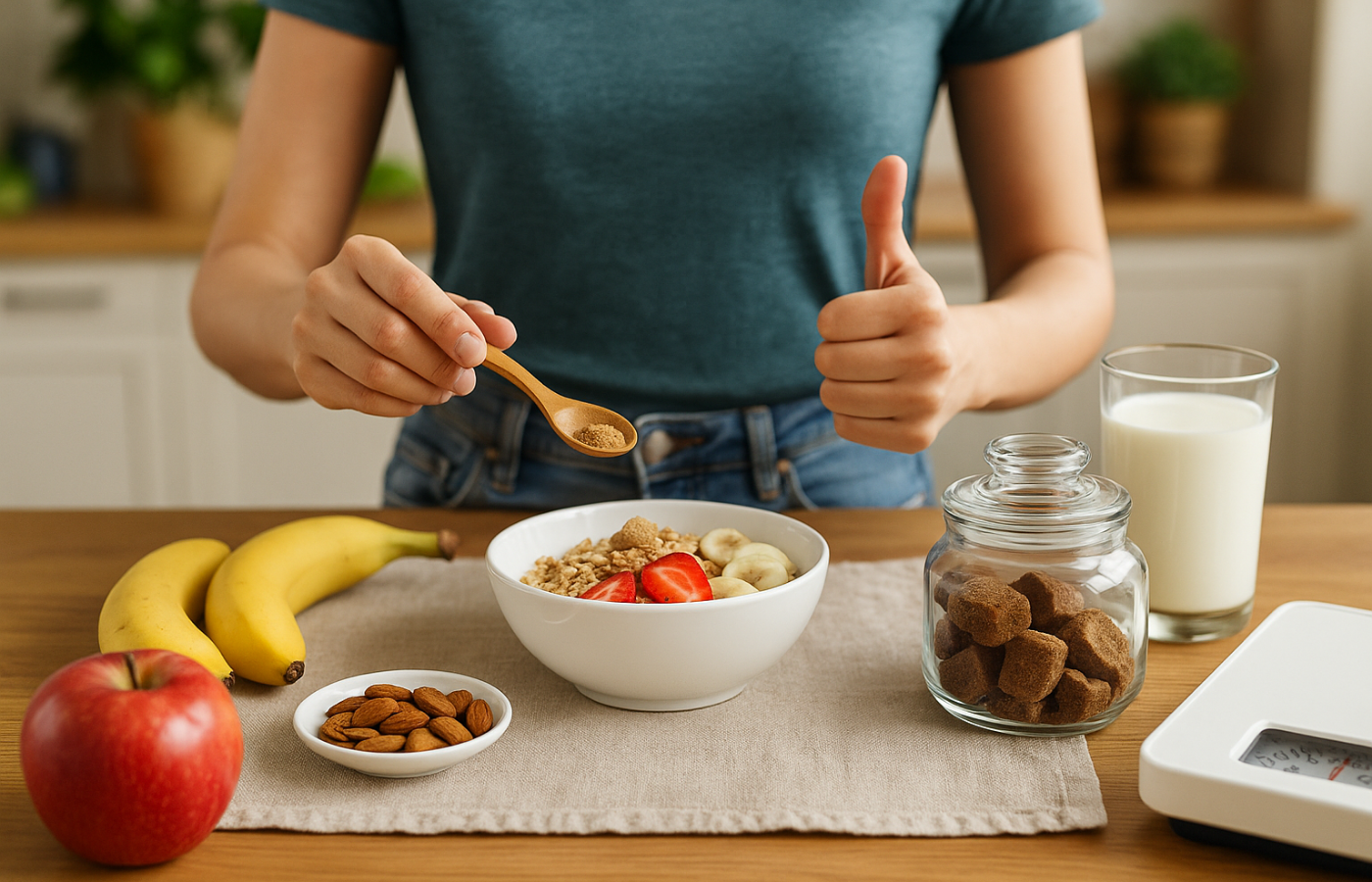In moderate amounts, brown sugar contains minerals and other substances that may contribute to health, but excessive consumptionElevated blood sugar, obesity, tooth decayIncrease the risk of such problems as
WHO and MHLW guidelines,Less than 5-101 TP3T of total caloriesand specifically, if you are an adult.Approximately 25 g of sugars per dayIt is recommended to limit the amount to about 2.5 degrees.
Because brown sugar is a sweetener, it is necessary to be creative about when, how much, and how to use it.
This is the kind of article we want people to read:
People who like brown sugar and use it daily/use brown sugar for snacks frequently.
People who are managing blood glucose and weight, diabetes and prevention are important to them.
People who want to take care of their skin and oral care caused by sweet foods.
Six points regarding proper amount and overeating
(2) Reference value for adults: 25 g/day of sugars as a guide.
(iii) Brown sugar is also a type of sugar and should be kept within this range.
4) Effects of excessive intake: blood sugar spikes, increased obesity and visceral fat, increased risk of lifestyle-related diseases, tooth decay and gum disease, rough skin, poor physical condition, etc.
(5) Devices to prevent overeating: not using too many sweetened foods at one time, adjusting small portions and frequency, balancing with other less sweetened foods, combining with exercise and lifestyle.
6) Special health and age precautions: diabetes, pregnant, lactating, elderly, and other people for whom blood glucose control is important.
Guidelines for Daily Sugar

The World Health Organization (WHO) recommends that the consumption of "free sugars (added sugars + sugars found in fruit juices, etc.)" beLess than 101 TP3T of total energy intakeand if you are considering health benefits, thenLess than 5%The Ministry of Health, Labor and Welfare of Japan and other organizations have issued reports in support of this direction. In Japan, the Ministry of Health, Labor and Welfare (MHLW) and other organizations have issued reports supporting this direction.
For example, for an adult who consumes approximately 2000 kcal/day, the total amount of sugarsApprox. 50gto the upper limit (less than 10%), ideallyApprox. 25g(less than 5%) is calculated as a guideline.
Sugar and calorie composition of brown sugar and its properties as "sugars

Although brown sugar contains more minerals than white sugar and has advantages in flavor and nutritional value, it is fundamentally a sweetener that contains more "sugar" (mainly sucrose). Therefore, as part of the sugar family, its "sugar mass" and "energy content" are included in the overall sugar intake. Excessive use, while good in terms of "sweetness" and "satisfaction," is a sugar load on the body.
Effects of overdose on the body

1. Blood glucose spike/insulin load
Large amounts of brown sugar can cause blood glucose levels to rise quickly. Although some argue that it is not as extreme as white sugar, it is still a "sweetener" and "sugars," and frequent and large amounts of it can cause high insulin secretion and risk insulin resistance in the long term.
2. Risk of weight gain/obesity
Excess energy will cause excess sugar to be stored as fat. Brown sugar is another source of calories. When combined with other sugars, such as sweet snacks and beverages, the total calories can be high without you knowing it.
3. Increased risk of lifestyle-related diseases (diabetes, dyslipidemia, etc.)
Disturbances in blood glucose and body weight may contribute to the development of type 2 diabetes, lipid abnormalities, hypertension, and other lifestyle-related diseases.
4. Effects on dental caries and dental health
Brown sugar itself is sweet, increasing the risk of tooth decay due to residual sugar and acid-producing bacteria in the oral cavity. Brushing and other care is also important if you frequently put it in your mouth.
5. Skin irritation/illness
It has been noted that excessive consumption of sweet foods can lead to inflammatory reactions and hormonal imbalances. The same can happen with brown sugar.
6. Other notes
Excess sugar may disrupt the intestinal environment and cause changes in bowel movements. Sleepiness and lethargy due to excess sugar can also affect physical condition after eating.
Approximate amount of brown sugar per day

The total amount of brown sugar used up is rarely more than 25 grams, but keep in mind that it should be added up with other sweeteners and beverages.
As for brown sugar, it is safe to use 1 teaspoon (about 5 g) to 2 teaspoons (about 10 g) as a "sweetener".
When using it in sweet snacks and desserts, try to keep it within this range or lower.
If used daily, use less other sweeteners or avoid the use of sugar (duplication).
Devices to prevent overeating

Adjust your own "sweetness" in menus and pastries (reduce the amount of sugar a little).
Add a little sweetness at the end → Adjust while checking the taste
Use a small amount at a time.
For "sweetness," try to combine staple foods, fruits, nuts, and other naturally sweetened foods to create a satisfying combination.
・Conscious of overall dietary balance (protein, fat, and fiber) to slow the absorption of sugar.
・Check weight and blood glucose levels regularly if possible.
summary
| (data) item | Contents |
|---|---|
| Dangers of eating too much brown sugar | Excessive consumption can cause various health problems, including blood sugar spikes, obesity, risk of lifestyle-related diseases, tooth decay, and skin problems. |
| Suggested daily sugar content | Total energy intake Less than 5-10% is the standard. For adults, sugarsApprox. 25g/dayIt is desirable to limit the number of |
| Approximate amount of brown sugar | As a sweetness aid Approx. 5-10 g at a time The standard is about 1 to 2 teaspoons (equivalent to 1 to 2 teaspoons), which is added together with other sweeteners to control the total amount of sugars. |
| Devices to prevent overeating | Devices to reduce sweetening, reviewing the frequency and amount of use, and balancing the overall diet are key. |
To enjoy brown sugar safely and deliciously, it is important to balance "enjoying sweetness + protecting your health". When adding sweetness, start with a small amount and adjust according to your own physical condition and health.


